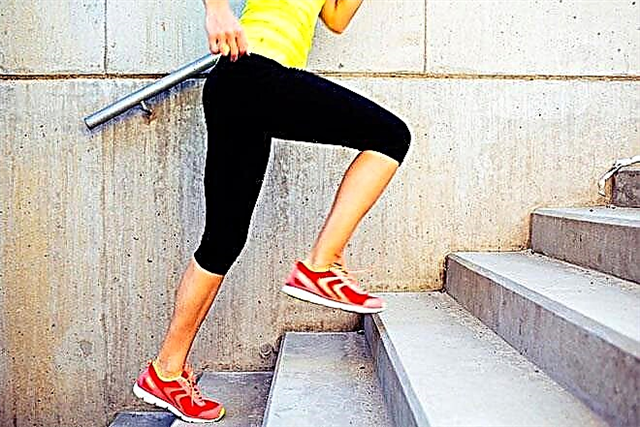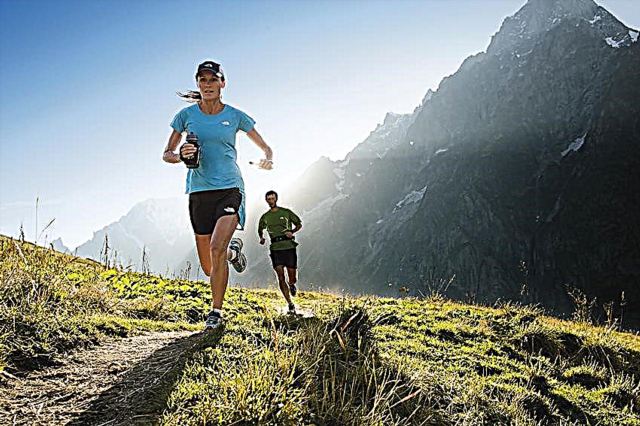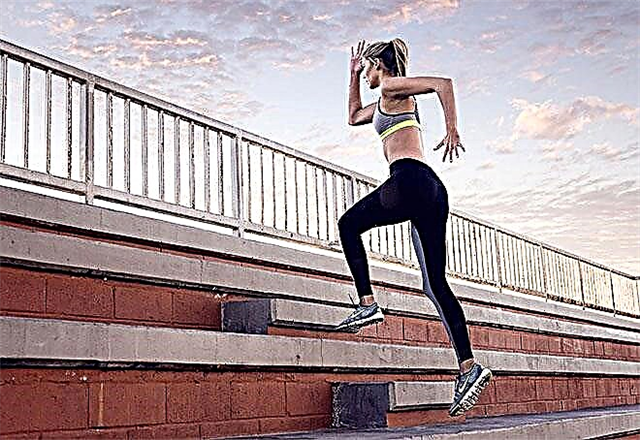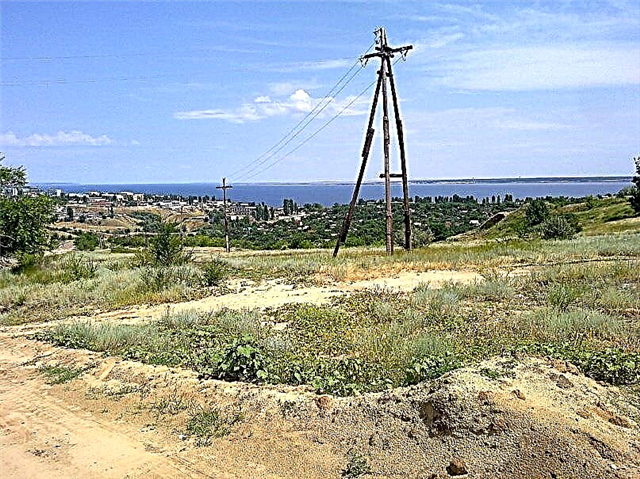Any athlete before each workout is simply obliged to warm up all muscle groups of the body well, otherwise, during the exercise, you can very easily get injured. Crossfitters in this regard are no exception, but on the contrary - it is especially important for them to prepare muscles, joints and ligaments for exercises, which often combine elements of weightlifting and gymnastic tricks. So, a crossfit warm-up should be an integral part of every workout, because its main goal is to prepare the cardiovascular, respiratory, and also the musculoskeletal system for performing the main training complex.
Crossfit warm-up features
CrossFit is functional strength training. It is during intense movements that the risk of injuring cold joints and ligaments increases several times. At the very beginning of the lesson, do not be lazy to do a few movements for warm-up.
Before starting classes, each athlete should slightly raise the body temperature, as well as smoothly prepare the body for a more difficult load. But it should be done correctly - by the end of the warm-up, you should not be very tired. Very often, many athletes, even during warming up, do some exercises too intensely, thereby driving themselves out at the initial stage of training.
Remember! The warm-up doesn't have to be like a WOD - it's enough to do a few simple exercises in a not very intense mode to warm up the muscles.
Warming up before your CrossFit workout should not interfere with your main program. You shouldn't do too many push-ups as a warm-up if you are going to do, for example, the “Cindy” complex of pull-ups, push-ups and squats during the main workout. The warm-up should be just a "snack" before the main course.
It is very important not to get tired before doing the exercise program for the day, you should have a lot of strength and energy. It is best to do fairly simple exercises that do not require much physical effort from the athlete.
Warming up for CrossFit will give you an opportunity to gauge how you are feeling today. If all movements are difficult, the main training program should be easier.

© dusanpetkovic1 - stock.adobe.com
Benefits of Warming Up Before CrossFit
Warming up before CrossFit is a big part of the training process. It is as important in CrossFit as it is in any other sport. All professional athletes warm up their muscles before a responsible competition.
Why do you need to warm up before a crossfit workout:
- to prevent a variety of damage;
- in order to increase the effectiveness of classes several times;
- during the warm-up, the level of adrenaline production increases, which contributes to an increase in the intensity of the exercise;
- to improve the blood circulation in the body;
- after warm-up, muscles and ligaments become more elastic;
- to slightly increase the strength indicators.

© gorynvd - stock.adobe.com
Crossfit warm-up rules
There are a few simple rules to follow in order to warm up before CrossFit benefit the athlete, not harm:
- Before training, you should carry out 3 types of warm-ups - general (cardio), articular and functional. First you need to prepare the heart for work and raise the pulse, for this a little aerobic work is done. The articular warm-up allows you to increase the mobility of the joints, the elasticity of the ligaments and tendons, while the functional one prepares the muscles that you will train for work.
- When warming up, focus on those muscle groups that you will use in training. For example, if you plan to load the buttocks and legs, it is inappropriate to do 50 warm-up push-ups from the bench for triceps.
- The best warm-up completely mimics the exercises that you are going to perform in the main workout, only using a lighter weight or without it at all (when it comes to strength complexes). If, for example, you plan to run in class, then after a joint warm-up, run a little in place to warm up and stretch.
- Do not arrange a separate training session from the warm-up. This is fundamentally wrong, especially for a beginner. It is not at all necessary to warm up for forty minutes to achieve a positive result. You can warm up your muscles qualitatively in just a few minutes. A couple of exercises will be enough to prepare the body for real stress.
Warm-up types
There are several common warm-ups, each of which will help the athlete to purposefully prepare the body for a heavier load.
General warm-up
The main goal of this type of warm-up is the smooth entry of the body into the exercise process. Do cardio work (athletes most often jump rope and jog). A general warm-up should take about 5-10 minutes.

© gstockstudio - stock.adobe.com
Joint warm-up
This warm-up is a simple exercise aimed at developing joints before class. During the joint warm-up, the athlete alternately works and warms up all the joints of the body. Exercises must be performed one after the other. The athlete works out the neck, shoulders, elbows, wrists, lower back, pelvis, knees, ankles.

© Maksim Šmeljov - stock.adobe.com
Special (functional) warm-up
Athletes do this type of warm-up before specific exercises. You should only target certain muscle groups. For example, if you need to do a bench press, then the first set is best done with an empty bar. Then the load increases a little, but if you have decent working weights, then putting 100 kg right after the empty bar will be wrong, you need another 1-2 warm-up approaches. This will be an example of a special warm-up.
Before the popular crossfit exercise called box jumping, it is best to warm up by jumping rope a bit. Thus, each athlete needs to do a couple of warm-up sets for a particular exercise. You need to complete them before the main WOD workout. The number of repetitions per set should be minimal.
Basic warm-up exercises
In many gyms, you can see this picture when, as a warm-up, some athletes simply exercise for 15-20 minutes on exercise bikes or on a treadmill. In this way, you can increase the pulse, warm up certain parts of the body, but you will not be able to work well on flexibility, as well as comprehensively prepare the body for training. Plus, you will drive yourself out before starting your main workout.
There are several effective exercises that you can do as a warm-up. All of them will contribute to the development of specific muscle groups. Below you will find the most popular crossfit workouts. Do not forget that before performing them, you need to carry out a full articular warm-up.
Squats
This exercise is common in all sports. Air squats are best done during your CrossFit workout. Jump squats are also good. More experienced and enduring athletes can perform the so-called "pistol" squat on one leg. You must follow a precise movement pattern.



During squats, the athlete should keep his back straight. The movements can be quite intense, but do not forget to breathe in the correct rhythm - inhale while lowering, exhaling while lifting.

© inegvin - stock.adobe.com
After the regular squats, you can do a few squats, holding the bar from the bar with outstretched arms above your head. In this case, be sure to monitor the coordination of movements.

Hyperextension
This exercise can be done both on a special simulator and using parallel bars or a fitball. Hyperextension allows you to stretch and warm up your back muscles well. Work without weights during warm-up. Watch your back and move slowly enough. The buttocks and hamstrings also take part in the movement.

Lunges
To warm up the body before training, this exercise must be done quite intensely. If the exercise area is not very large, keep in mind that it is not at all necessary to perform the movement while moving forward - you can do alternate lunges of the legs, remaining in one place (take a wide step, and then return to the starting position). During this exercise, athletes often use dumbbells, but this should not be done during the warm-up. Lunges help warm up all the muscles in the thigh.

© Monkey Business - stock.adobe.com
Pushups
Floor push-ups can also be done as a warm-up during CrossFit workout. The optimal number of repetitions for warming up is 10-15 in one set. Do not do more - the target muscle group (in this case, the triceps and pectoral muscles) should not get tired.
Performing push-ups, you need to lower yourself to the floor while inhaling, and on exhaling, return to the starting position. Make sure that the range of motion is full. This means that, doing push-ups, you must touch the floor with your chest.

Standing barbell broach
This exercise will help the athlete prepare the deltas and traps for the main load. In order not to overload the muscles at the beginning of the workout, work only with an empty bar. Pull the projectile to the chin at a fairly slow pace. To warm up, you will need to do about 12-15 repetitions. Remember, as you exhale, you need to pull your elbows up, and as you inhale, return to the starting position.

All of the above exercises will help warm up every large muscle group. You can also remember the warm-ups in physical education lessons at school - they are also suitable for preparing the body for a full workout. Try changing your warm-up exercises every day to be more effective.
Preparing for different types of loads
As mentioned, the choice of warm-up exercises depends a lot on the WOD you are going to do in your CrossFit workout.
Warm up before cardio complexes
Cardio training is always associated with running, jumping. Therefore, the athlete must prepare the cardiovascular system before performing intense cardio movements. You can jump rope without fanaticism, go jogging, and then work on stretching. The main goal of this warm-up is to slightly increase your heart rate.

© kikovic - stock.adobe.com
Warm up before gymnastics
Before doing WODs containing gymnastic elements, you will need to do flexibility and stretching exercises. In this case, normal forward and side bends, knee bends, plie squats, lunges, and leg abductions are perfect.

© jan-stopka - stock.adobe.com
Warm up before weightlifting
If during the main WOD you will work with heavy sports equipment, then, while warming up, you should perform those movements that will help work out the target muscle group that will be involved during the main set of exercises.
For example, if you are going to practice bench press, then it is better to warm up with the same exercise, but with a lighter weight (use an empty bar). Before the barbell squat, you can do several sets of this exercise, but without any additional load. In the warm-up approach, the weight of the sports equipment should not be more than 50% of the main working load. You can also work on a specific element that makes up a particular exercise.
After the warm-up, the athlete should rest a little. You can start the basic WOD in about 5 minutes.
It is best to combine different types of warm-ups before completing the basic exercise plan. Thus, you can effectively prepare the body for future loads, as well as protect joints and ligaments from dangerous injuries.









